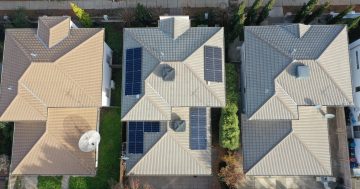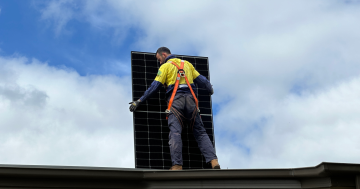
A virtual power plant is a network of homes connected through their solar battery storage. Photo: Mondiaux Solar.
There is no doubt it is getting harder to keep up with the pace of change in the renewable energy market. While solar panels have been around for decades, as technology has improved and prices fall, Australians have continued their mass take-up of solar energy systems.
More than two-and-a-half million – more than 20 per cent – of Australian households now have rooftop solar photovoltaic (PV) systems. But it has been the next step towards batteries where things have stalled.
Until now.
While improvements continue to be made on the environmental impacts of materials and the production of infrastructure required to generate renewable electricity, progress in battery systems and technology are making the biggest impact for households.
Not too long ago, consumers had to carefully weigh the cost of a battery against expected household energy use and the warranty life of a battery. There was no point installing a battery if you were not going to make savings during the life of the purchase, and the cost was too expensive for most people.
But virtual power plants and energy optimisation software have changed everything, suddenly making batteries a viable option for many households.
A virtual power plant, otherwise known as a VPP, is a network of homes connected through their battery storage. The idea is for a group of individual households to connect through a supplier to give or take excess energy with the larger grid.
As the electricity supply or demand changes on the grid, this network of homes joins together to support the grid by releasing energy into the grid or storing energy from it.
Anyone with a battery and solar can participate in a VPP and they will be paid for sharing their energy.
The benefits for the household don’t stop there, either. The computer systems designed around VPPs use artificial intelligence to predict house loads and solar generation using weather forecasts to always ensure your battery is full with the cheapest electricity available, even on days when it rains.

Virtual power plants and energy optimisation software is making battery storage a viable option for households. Photo: Thomas Lucraft.
“The beauty of a VPP is the system will monitor energy use to optimise battery investment,” says Mondiaux Solar’s commercial project manager, Howard Lian.
“The intelligent control system for a VPP will predict the future solar generation of the system for each home, and determine when the stored power will deliver greatest savings to their energy bill, while learning how a household uses power for different days of the week.
“Previously, people thought batteries were not economical but this is a game changer.
“VPPs help manage peak electricity demand, improve grid security and even avoid excessive investment in electricity infrastructure.
“Battery storage is the next big thing in renewable energy because people can store energy captured from rooftop solar systems to then use it when it’s most cost-effective and provide support to the grid when it’s under stress.”
Additionally, the ACT Government is offering incentives for the take-up of VPPs, making it even more affordable.
The Next Gen Battery Storage Program was created to encourage the rollout of solar energy storage in the ACT, and assist the development of the ACT-based energy storage industry.
The program aims to encourage the rollout of around 36 megawatts of energy storage in Canberra homes and businesses during the next three years.

Mondiaux Solar’s commercial project manager, Howard Lian. Photo: Thomas Lucraft.
Howard says while it is still early days, as the market matures – when hundreds of batteries will all work together in unison – distributors and retailers will be prepared to pay premium rates to access this dispatchable resource.
Together with the technology to optimise energy sources – selecting grid power or battery stored power according to time and use patterns – the return on investment for a battery has improved to deliver average savings of around 26.4 per cent. That’s before the energy retailers pay to use surplus power.
All energy storage systems sold by providers under the Next Gen Battery Storage Program must come from the Clean Energy Council’s list of approved energy storage devices.
A minimum 10-year warranty for batteries and inverters are a requirement for all providers.
For more information, visit Next Gen Battery Storage Program, or Mondiaux Solar.





















